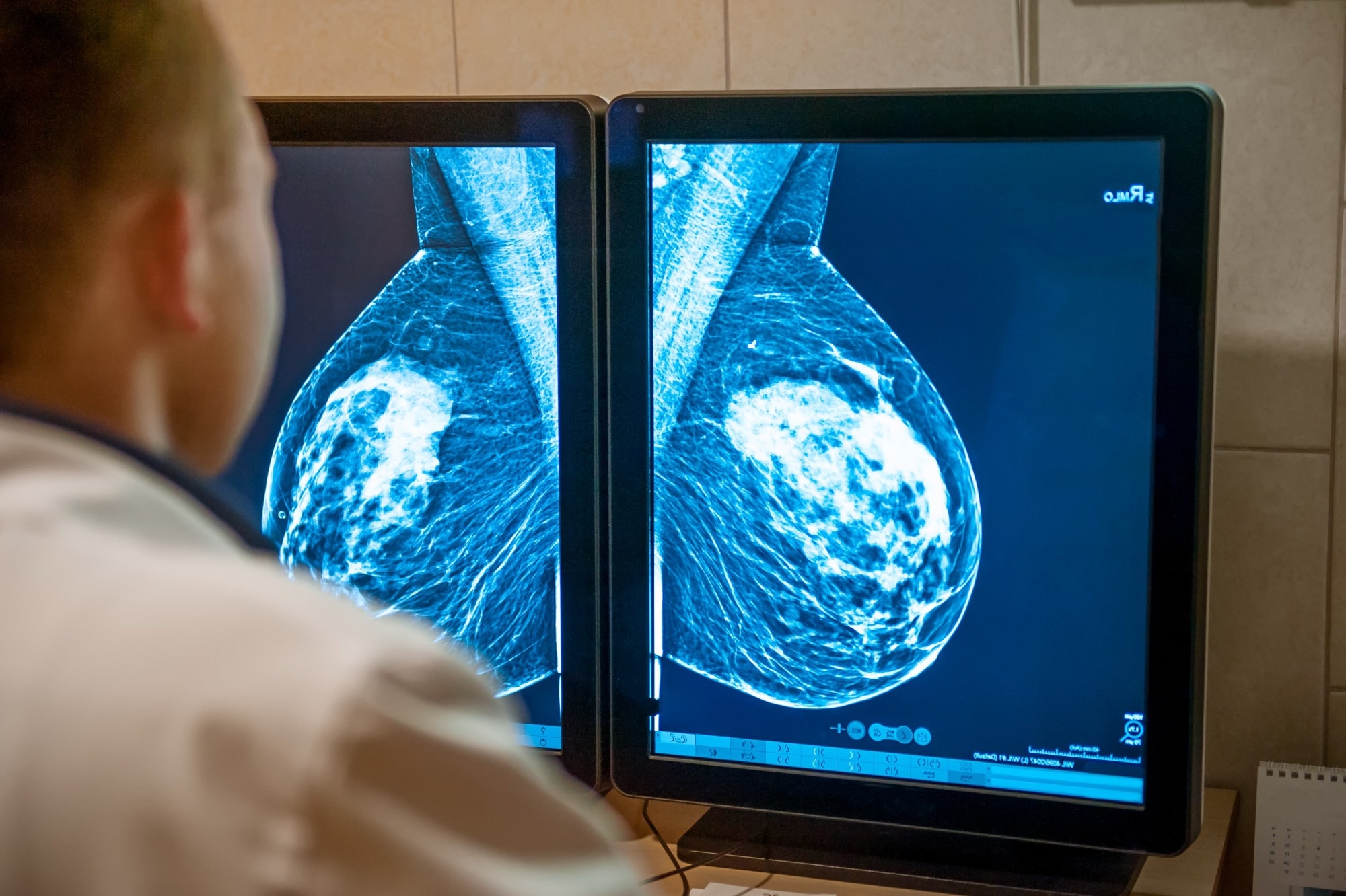A new study in JAMA Network Open examines how social and demographic profiles influence physicians in their readiness to discuss breast density with their patients and vice versa.
 Study: Sociodemographic variations in women’s reports of discussions with clinicians about breast density. Image Credit: Okrasiuk / Shutterstock.com
Study: Sociodemographic variations in women’s reports of discussions with clinicians about breast density. Image Credit: Okrasiuk / Shutterstock.com
Breast density and cancer
Since breast density affects the results of screening mammography and independently poses a risk factor for breast cancer, it is important that women discuss this factor with their doctors. To facilitate these conversations, it is mandatory in many American states that dense breasts be identified clearly and women are notified following mammography.
Earlier research indicates that less than 50% of women discuss breast density with their doctors; however, it is unclear the content of these conversations. Furthermore, previous studies have reported that minorities and disadvantaged women are less aware of the risk of breast cancer associated with breast density, thus making them less likely to talk or ask about this topic.
About the study
The current study used a population-based telephone survey to gather data from July 1, 2019, to April 30, 2020. All women who were contacted for the study had no history of breast cancer and were screened by mammography at some point during the two years before this study.
The women ranged in age from 40 to 76 years. All study participants were acquainted with terms like breast density or dense breasts.
Women were asked whether their doctor spoke about breast density or terms related to breast cancer risk spontaneously or as a response to their questions.
What did the study show?
The current study included 770 women who said they had talked with their healthcare providers (HCPs) following breast cancer screening. Over 80% of the study participants resided in states where dense breast notification (DBN) was mandatory.
Among the study cohort, about 50% were 50-64 years old, 25% were 40-49 years old, and about 30% were older than 65 years old. About 40% were White and 27% Black, with one in seven Hispanic and 6% Asian.
Almost 90% of the women said that their doctors asked about breast cancer risk, with Black women twice as likely to be asked these questions. Among women with a family history of breast cancer or who previously underwent a breast biopsy, the likelihood that they were asked about their breast cancer risk was three-fold and doubled, respectively.
An overwhelming majority of 94% reported that their HCPs discussed their mammography results with them. While almost 90% of women in each category reported these discussions, Hispanics were 63% less likely to have this conversation as compared to Whites. Low literacy reduced the likelihood of study participants having their mammograms discussed with them by 70%.
Only two of every three women were asked if they wished to discuss future breast cancer risk or other ways to screen for breast cancer cancer. Other screening options were discussed with over 60% of women; whereas it was 50% more likely for these options to be discussed if a prior breast biopsy had been performed.
Over 80% of the study participants asked their HCPs about breast density. About 70% of women reported that they were asked if they had questions about breast density; however, women over the age of 65 were only half as likely to be asked.
Asians were 60% less likely to be asked if they had concerns regarding their breast density. The likelihood of women with poor literacy being asked this question as 36% lower.
Over 80% of women in all groups said their questions regarding breast density had been answered mostly or fully. However, as compared to White women, Asians were 80% less likely to be satisfied with the answers they received to their questions regarding breast density.
Questions asked by Hispanics were half as likely to be answered mostly or fully. The likelihood of questions by low-literacy women being answered to their satisfaction if they asked about breast density were half those of Whites.
What are the implications?
Most HCPs in the current study discussed mammography findings with their patients. Moreover, most women also said they were asked about breast cancer risk and received answers to their questions on breast density.
Nevertheless, the study findings demonstrate that more work is needed by HCPs to ask women to voice their concerns and questions, discuss other screening options, or future breast cancer risk. This is particularly important among Hispanic and Asian women, as well as poorly literate women, whose questions were less likely to be answered.
It is also possible that HCPs are not equipped properly, either knowledge-wise or because of limited training in counseling, to deal with these questions. This may indicate the need for more clinical education.
Despite some reassuring findings regarding appropriate differential counseling by patient race and ethnicity, other results echo prior research documenting racial and ethnic variations in processes of care and provide new evidence of differential processes by patient literacy.”
Journal reference:
- Kressin, N. R. et al. (2023). Sociodemographic variations in women’s reports of discussions with clinicians about breast density. JAMA Network Open. doi:10.1001/jamanetworkopen.2023.44850.